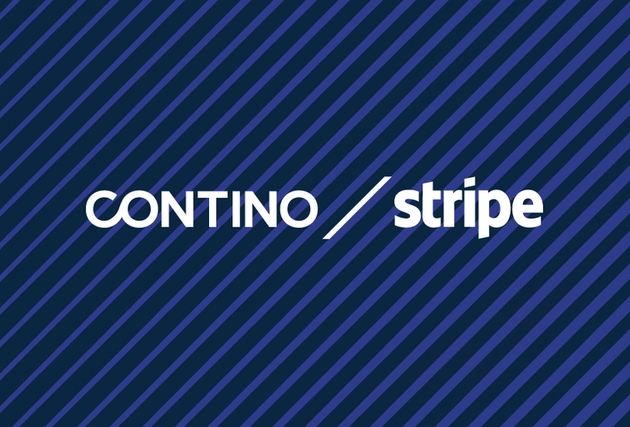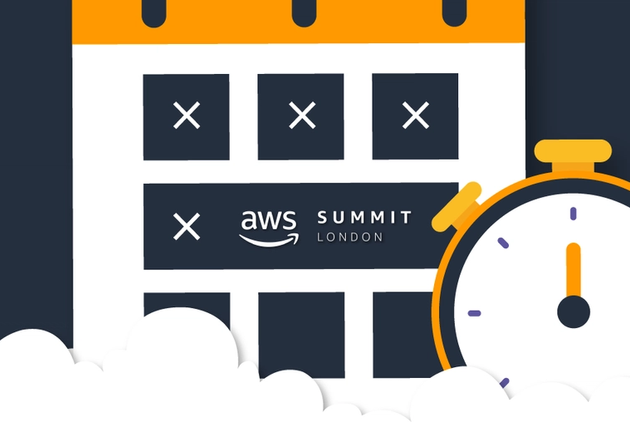How an Agile Coach Can Help You Become a Truly Agile Organisation
The Agile Manifesto has been around for over 21 years now. Scrum and XP began in the 90s. We can even trace adaptive software development to the early 1970s.
Yet, so many organisations continue to fail in becoming truly agile. This is due to the majority still failing to understand what true agility is and how complicated it is for an organisation to adopt the practices and thinking that is required.
It is with this in mind I hope to highlight the complexities of becoming truly agile and demonstrate why exactly your enterprise needs an agile coach.
What Is an Agile Coach?
The term Agile Coach has come to mean different things to different people and organisations. If you want a good argument, put several Agile Coaches in a room and ask them to come up with a definition.
I personally subscribe to the ICAgile definition:
An agile team coach guides individuals and teams to reach high performance. They weave together skills from professional facilitation, professional coaching, mentoring, and teaching—all in service of delivering business results that matter.
An Agile Coach needs to understand that only the client can own the solution. The coach will help the individual, group or organisation, find solutions that come from within, whilst providing the guard rails to keep them on track.
They may work at different levels of the organisation, from team coach (e.g. Scrum Master), to a department coach (enterprise coach), to the executive suite (c-suite coach) or a mixture of all of these.
Why Are Agile Coaches in Demand?
While the term Agile Coach has been around for a number of years it has only been in the last few years that the market has grown.
There are, of course, many reasons for this. From companies and change agents finding a common name for the role, to, more importantly, organisations realising that change doesn’t happen by itself. It is this second reason I want to explore further.
Let’s take my own career path as an example. As a dot net developer I worked as part of a Scrum Team and, in time, wore the dual hat of developer and Scrum Master due to a perception that a Scrum Master wasn’t delivering “value” to the product. Luckily for me, I found a company that wanted to invest in Scrum Masters, and I soon found myself embedded in a team helping them to live the values and principles of agile. I was, in essence, an Agile Coach at the team level.
I soon discovered that, whilst I was able to create an environment in which the team could challenge themselves and improve, these were only local optimisations and, in the grand scheme of things, did little to improve my organisation’s adaptability. I came to the conclusion that to improve organisational adaptability I would need to broaden my understanding and work with many different areas of the company.
This was around 2019 and I believe it was at this time that many organisations were coming to the same understanding. They were realising that you couldn’t just put in a new process and call yourself agile. A lot of effort was needed working with people and teams at all levels of the organisation and I believe it was this realisation which has driven the demand for Agile Coaches.
How to Safely Navigate the Observability River: Your Complete Guide to Monitoring & Observability
Everyone is looking for new ways to improve their platforms and applications, but where do you start?
We’ve got to look at the picture as a whole… It’s time to take a trip down the Observability River.
How Can an Organisation Become Truly Agile?
Before we begin looking at some of the reasons your enterprise needs an Agile Coach, let’s first look at what is required for a company to truly become agile.
Setting aside buy in and a top down bottom up approach, if I was working for a traditionally structured organisation I would approach change in the following way:
1. Create a psychologically safe environment.
In 2012, Google started an initiative to discover why some teams struggled and others soared. This initiative was code-named Project Aristotle.
This was something they struggled with for quite some time and no matter how they cut the data there was no correlation that suggested one type of team was more likely to succeed than another.
It wasn’t until they came upon research by Amy Edmondson that they came upon a Psychological Safety and it was with this, they concluded, was the magic ingredient:
Within psychology, researchers sometimes colloquially refer to traits like ‘‘conversational turn-taking’’ and ‘‘average social sensitivity’’ as aspects of what’s known as psychological safety — a group culture that the Harvard Business School professor Amy Edmondson defines as a ‘‘shared belief held by members of a team that the team is safe for interpersonal risk-taking.’’ Psychological safety is ‘‘a sense of confidence that the team will not embarrass, reject or punish someone for speaking up,’’ Edmondson wrote in a study published in 1999. ‘‘It describes a team climate characterized by interpersonal trust and mutual respect in which people are comfortable being themselves.’’
Ok, now we have created psychological safety in our organisation , let's look at the next step.
2. Install a sense of learning within the organisation.
Business management defines a learning organisation as a company that facilitates learning, takes the outputs of those learnings and continually transforms itself to remain competitive in a business environment. The concept was coined through the work and research of Peter Senge and his colleagues. This work is summarised in Senge’s book, The Fifth Discipline.
In his book, Senge proposes 5 characteristics of a learning organisation. In simplistic terms these are:
- Systems Thinking: Thinking about a system as a who rather than breaking it down into its component parts. It is the process of understanding how changing something in one part of a system influences another part as a whole.
- Personal Mastery: The commitment of the individual to continuously learn.
- Mental Models: The ability to challenge current thinking of both the organisation and the individual.
- Shared Vision: The ability to build a shared vision for the company
- Team Learning: All learning is shared amongst the team to help each other to learn quicker.
So, we now have a learning organisation; extremely important in any organisation that wants to adapt. What’s next?
3. It’s time to move away from projects!
Mik Kersten, CEO at TaskTop, and author of Project to Product, highlights the dangers of local optimisation in his talk at the DevOps Enterprise Summit 2019 (you can watch it here). In this talk, Mik Kersten references two cases in which organisations have optimised around IT:
Example 1: Nokia
Nokia adopted agility in its IT department for its mobile phone business in the effort to counter the rumoured launch of a new player to the market that would see the introduction of full screened smartphones, the iPhone.
It was the poster child for scaling agile, but on the ground the technicians and the business were far from convinced. It eventually led to Nokia going from the largest mobile phone manufacturer to the collapse of their mobile phone division.
Example 2: LargeBank
“LargeBank” had gone through two prior agile transformations and was currently on its third, a DevOps transformation rumoured to cost in the region of a billion dollars. Once again, project management was green and all appeared on track but there was no measurable improvement to value delivery.
In both these cases, the primary reason that Mik Kersten gives for their failures is that they both optimised in silos and not end to end customer value. So, what is end to end customer value? It is taking an idea from ideation to delivery to the customer. While some refer to this as a product it is also commonly known as a value stream. It includes everyone in the organisation from product, to developers, solicitors to accountants, compliance to finance. In other words, anyone who is involved in making that idea happen.
Most agree that a move to a product mentality makes perfect sense, it will allow us to deliver quicker by improving the flow of work through the system. It also allows us to deliver the right solution. There is still one issue though, traditional budgeting. Traditional budgeting is time consuming due to:
- Development of the budget is time-consuming and costly.
- Budgets are rarely focused on the company’s strategy.
- Budgets generally do not stimulate value creation.
- Budgets may create obstacles for changes.
- Budgets increase the centralisation of power within an organisation.
One solution is Beyond Budgeting. Beyond budgeting is a leadership philosophy which focuses on:
- Rolling budgets.
- Rolling forecasts.
- Benchmarking linking managers' targets to external benchmarks and not past performance.
- Focus efforts on managing future results and not explaining past performance.
- Allow operational managers to react to the environment.
- Encourage a culture of innovation.
We now have our product and budget in place but to take advantage of this we need to ensure that our teams are architected in such a way as to support flow in an optimal way.
4. Organise your teams around value to allow flow.
As well as organising our backlog around products we also need to consider our teams. Conway’s Law states:
Any organization that designs a system (defined broadly) will produce a design whose structure is a copy of the organization's communication structure.
Matthew Skelton and Manuel Pais expand on this in their book Team Topologies. Many organisations have a command and control structure with teams formed around specialities. An organisation arranged in functional silos (for example, front end team, backend team, UI team, database team and test team) is unlikely to produce well architectured software that is optimised for flow.
This, in turn, will inhibit the organisation from being adaptive. To overcome this issue, Skelton and Pais suggest a Team-First thinking approach with four types of teams which are:
- Stream-aligned team
- Enabling team
- Complicated-subsystem team
- Platform team
With these team topologies applied we can now optimise for flow.
5 Reasons Why Your Enterprise Needs an Agile Coach
We can now see the complexity of change, and this is just the bare minimum, it is not surprising that organisations are looking for people who can guide them on the journey.
So, to the five reasons your organisation needs an Agile Coach:
- They can coach leadership to help them find the solutions that best solve the organisational issues.
- They will know how to facilitate and use different facilitation techniques to add value to your organisational change.
- They can mentor coaches with less experience to increase awareness.
- Finally, they can teach groups and individuals using dynamic teaching techniques.
- Experience and knowledge to understand which items like the above will work and which won’t.
How to Become an Agile Coach
If you are interested in becoming an Agile Coach there are a few things to bear in mind:
- It’s hard. Having to constantly provide guard rails to organisations that are anything but agile is difficult.
- If you are the type of person who likes to manage and instruct people in what to do, then this is not for you.
- You need a good sense of humour!
With that in mind, I highly recommend ICAgile’s certifications. In particular their Agile Team Coaching track. ICAgile is methodology agnostic and was co-founded by Lyssa Adkins, who wrote the best selling Coaching Agile Teams.
In Summary
In theory, it is always possible to get good at something by yourself, but if you want to continuously get better, then a coach is a good idea. We can see this everywhere:
- A practitioner of martial arts will always have a coach.
- Venus and Serena Williams have had a coach throughout their careers.
- Elon Musk hired Jim Kwik to be his coach.
- Liverpool have Jürgen Klopp
- Spotify worked with Henrik Kniberg
So if you want your organisation to improve, don’t do agility alone, get an Agile Coach.








